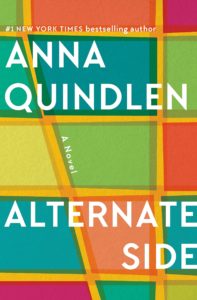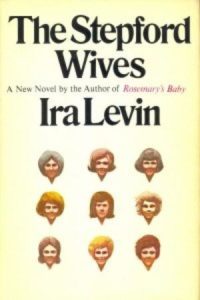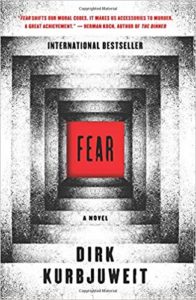Only the other day in my well-heeled neighborhood in South London, a horrible scene erupted out of nowhere. A bus was unable to make its usual right turn into a residential street owing to an illegally and awkwardly parked car on the corner. The bus driver called to the car’s owner to move his vehicle and the car owner promptly smashed the bus driver’s window and attempted to stab him. Meanwhile, cars backed up in all directions, everyone impatient for the altercation to run its course one way or another, and pedestrians in earphones strolled by, avoiding eye contact. My point? There’s a lot of anger brewing in seemingly tranquil communities—and we’re not only getting used to it but unwilling to step in to diffuse it.
While researching and writing Those People, I was staggered by the volume of true stories I was told about bad neighbors. Really bad neighbors. The drug addicts who ended up burning the house down; the sex workers in the open-all-hours illegal brothel; the dog owners who left their poor animals locked up and barking while they went away for the weekend; the DIY fanatic who for a whole year spent every evening till midnight and every weekend demolishing and drilling and sawing (OK, this one is my own story—though he moved out five years ago I still have nightmares about him). One common factor that leapt at me was that the household suffering next-door is often a young family who have saved for years for their first home, and so you have the terrible heart-breaking collision of youthful optimism with entrenched nihilism. I knew I had to include that dynamic in Those People: Ant and Em Kendall and their new baby Sam are separated only by a thin wall Dafrom the appalling Booths, with their stadium-level sound system, their overflowing collection of vehicles and their dangerously constructed scaffolding.
To be honest, there’ve been times when I’ve wondered if my novel, which includes two deaths, might be too tame a depiction of community conflict. Let’s hope not. Here, I’ve collected some favorite reads involving other neighborhoods that our fictional selves would do well to avoid…

The Murder at The Vicarage by Agatha Christie
Rather like Cabot Cove of Murder, She Wrote (named the murder capital of the world), and the Oxford of Colin Dexter’s Inspector Morse novels (surely the bloodiest university city in all of England), St Mary Mead is no destination to go plugging into your your SatNav. Certainly, by the third or fourth Miss Marple mystery, anyone unavoidably detained there would know to lock their door at night—and possibly move a piece of heavy furniture in front of it while they’re at it. But The Murder at the Vicarage is the first, which means our impression of its streets—Jane Marple lives on picturesque Old Pasture Lane, not far from the high street with its classic English pub, the Blue Boar—is of a rural idyll. We’re forgiven, surely, for thinking that the murder of the despised Colonel Protheroe (in the vicar’s study, no less) is an unfortunate one-off.

Portobello by Ruth Rendell
The titular West London road, caught on the late ’80s cusp of gentrification, evokes perfectly the mixed bag that is a big-city neighborhood: posh stuccoed villas stand alongside decaying flats, the wealthy and self-absorbed existing cheek-by-jowl with the dispossessed and despairing. Theft, arson, and murder are not only horrifying plot turns here but also inevitable ones. In Rendell’s closely-observed community, one man’s loss is another man’s gain—and vice versa.

Watching You by Lisa Jewell
Melville Heights is a hilltop parade of twenty-seven colorfully painted Victorian villas in a sought-after quarter of Bristol, perfect for surveying the comings and goings of those who live below—and next door. Joey Mullen’s obsession with charismatic headmaster Tom Fitzwilliam begins harmlessly enough, but Joey is not the only one watching her neighbors in this expertly-clued, character-rich puzzle.

Alternate Side by Anna Quidlen
Not crime fiction, but rather a masterly portrait of a group of residents on the Upper West Side, whose relationships are considerably less solid than they’ve been tempted to believe. On the surface, the ultimate goal of Nora and Charlie is an assigned parking space—so far so white-middle-class New York—but just as this is achieved far more profound aspects of life are found to be disintegrating.

The Stepford Wives by Ira Levin
‘It’s a nice town with nice people!’ No list of novels about the suburban dream/ nightmare is complete without Ira Levin’s 1972 classic in which forward-thinking Joanna Eberhart becomes increasingly disturbed by the somewhat traditional values of her fellow females in her new Connecticut town. At first glance, Stepford has everything you could want from your suburb: the perfect houses and gardens, the golf, the cars, the cocktails on the patio, the sex. Never mind that the men have no souls and the women are robots. It’s no mean feat to combine wild comedy with heart-stopping suspense, but here we have it, almost fifty years old and not yet bettered.

Fear by Dirk Kurbjuweit
The author and I did an event together last year and it was chilling hearing him recall the real-life experiences that led to this novel about a psychotic neighbor who systematically terrorizes the narrator and his family. It’s one thing to let squabbles about parking or boundaries escalate, but quite another to find yourself the victim of motiveless malignancy. Kill or be killed: domestic life doesn’t get more stressful than this.

















